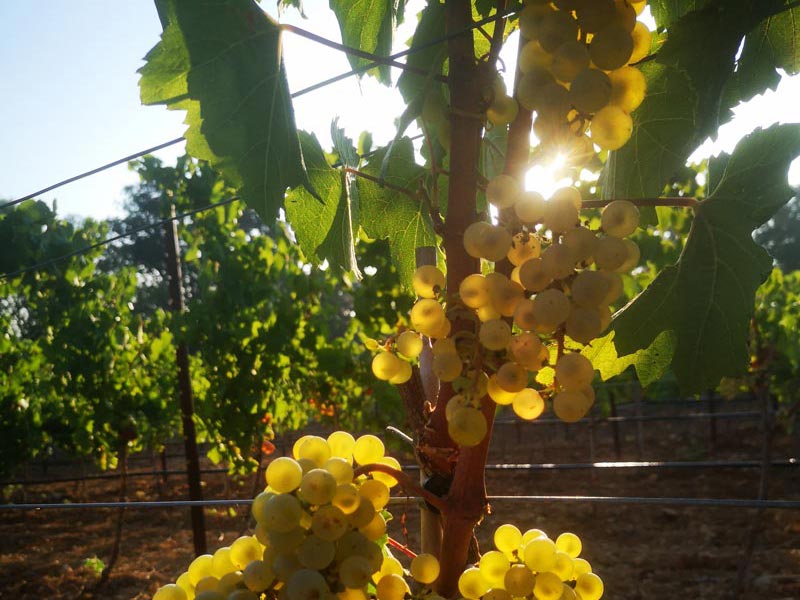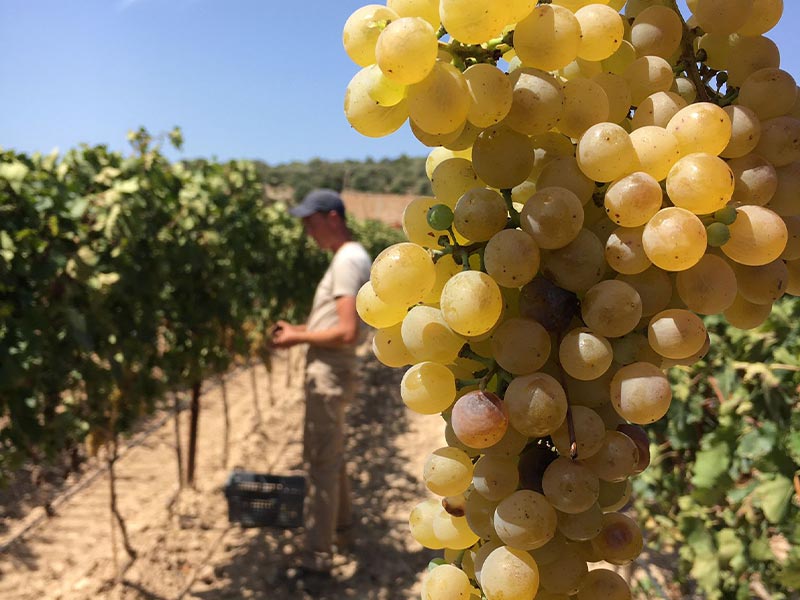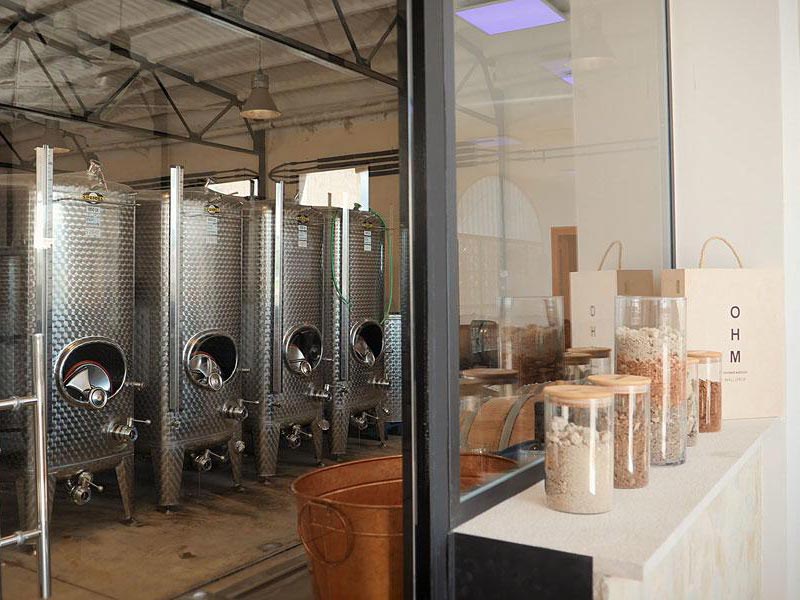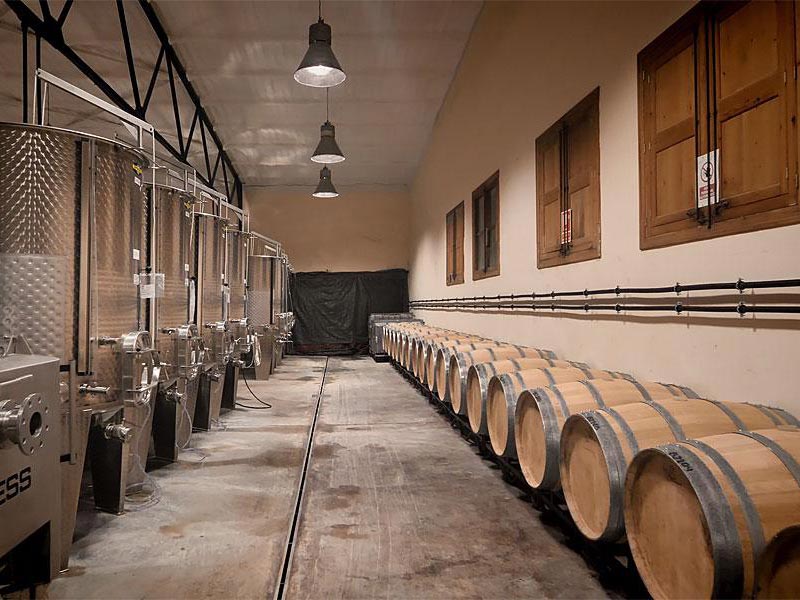
From the vineyard to the cellar
When summer turns to autumn, the days become shorter and the evenings cozier, the time has come for the grape harvest. The carefully harvested grapes are quickly brought to the wine manufactory. There, everything is now done to bring the high quality of the freshly harvested grapes into the bottle in a few months.
The right time to harvest
During the harvest, the right timing is crucial for the quality of the wine. A few more days of sun lead to more sweetness and, as a result, more alcohol. Here, experience and the weather forecast help to catch exactly the right day and thus achieve the desired quality level.
Early in the morning, when temperatures are still moderate, the harvest team is in the vineyard. The grapes are picked into small, flat boxes so that they are not crushed by their own weight. In a refrigerated truck, they are brought to the Château, where the cellar master takes them over. From now on, he takes over the direction.


Quiet in the basement
In the cellar begins the adventure of alcoholic fermentation. First of all, the grapes are destemmed, i.e. the berries are separated from the grapevines. In the case of white grapes, the resulting mash is usually pressed immediately afterwards. This separates the sweet grape juice from the solid components such as seeds and berry skins. This is the moment when the wine manufactory is flooded with an intense aroma. The extracted juice rests overnight to allow lees to settle before the clarified must is drawn off the next day.
In the production of red wine, the skins and seeds remain in contact with the must throughout the fermentation process. This is the only way that color and tannins can be released from the grape skins by the onset of fermentation. If the red grapes are pressed before fermentation begins, rosé is produced.
The sugar hunger of yeasts
For fermentation yeasts unfold all their talent. As natural components of the grapes and juice, they now become active and form alcohol and carbon dioxide from the fructose in the grapes. It bubbles in the cellar and smells unmistakably of yeast. When there is no more sugar in the tank, calm gradually returns to the cellar and the wine can settle and mature.
Depending on which style of wine best suits the particular grape variety and vintage characteristics, the aging process can take up to several years. During this time, the cellar master constantly checks and controls what is happening in the barrels. His know-how and experience now help to crown the quality work in the vineyard.


